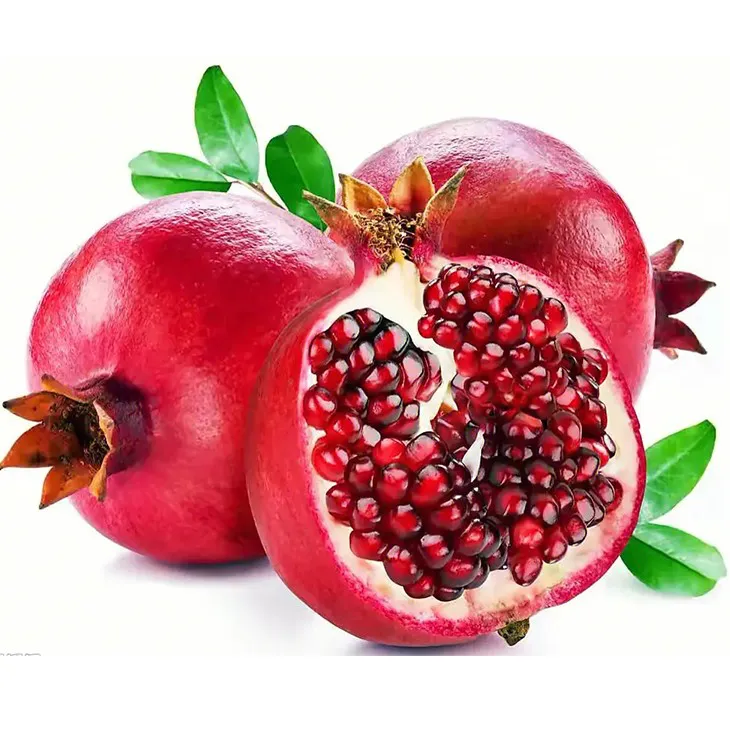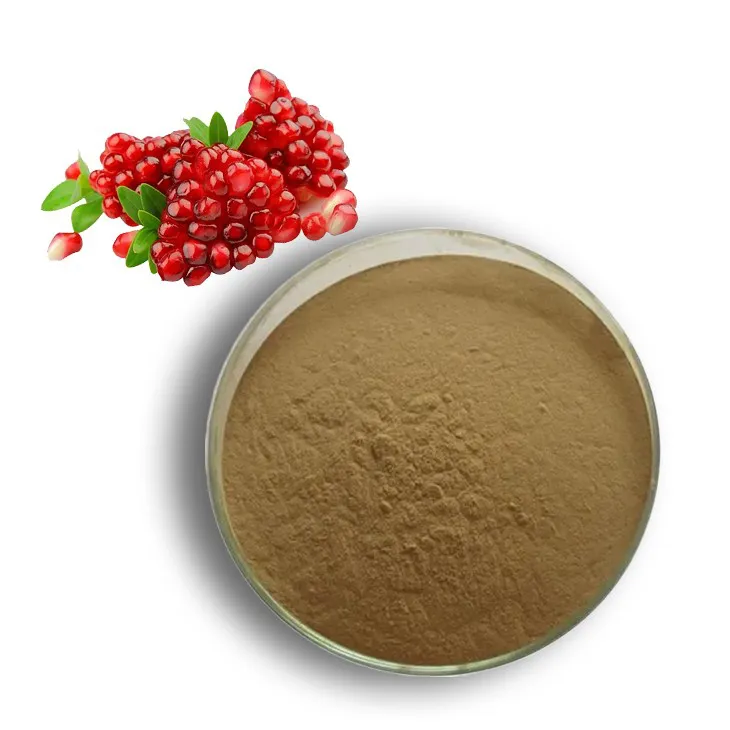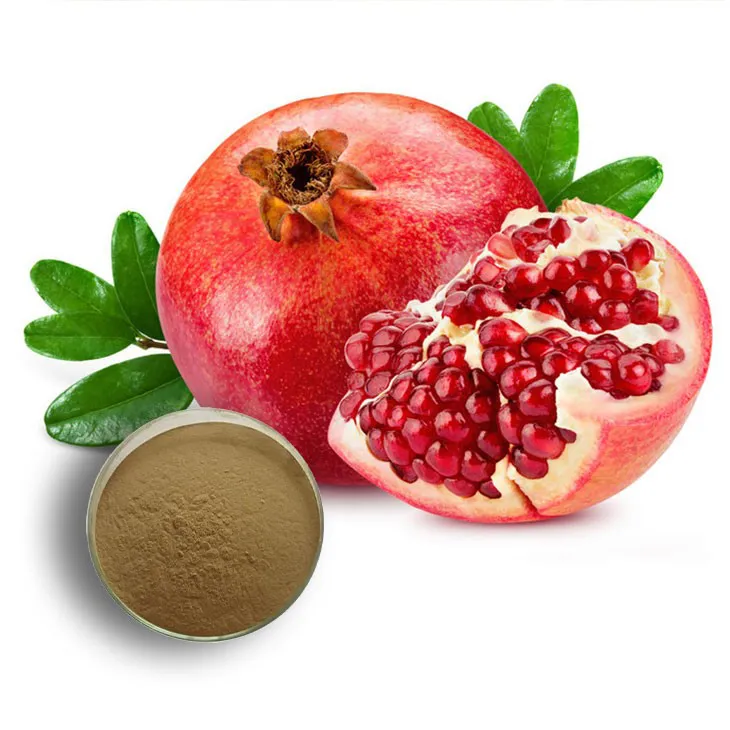- 0086-571-85302990
- sales@greenskybio.com
Extract pomegranate extract by steam distillation.
2024-11-26

1. Introduction
The pomegranate, known botanically as Punica granatum, has been revered for centuries not only for its delicious taste but also for its numerous health - promoting properties. Pomegranate Extract has emerged as a valuable product with applications in various fields, including medicine, cosmetics, and the food industry. One of the key methods for obtaining this extract is through steam distillation, a process that has been refined over time to efficiently separate and concentrate the valuable components present in the pomegranate.

2. The Process of Steam Distillation for Pomegranate Extract
2.1. Preparation of Pomegranate Material
Before steam distillation can commence, the pomegranate must be properly prepared. The fruits are first harvested at the appropriate stage of ripeness. The outer rind is removed, and the arils (the juicy seed casings) are separated. These arils are then either used whole or crushed to increase the surface area available for the distillation process. It is important to note that the quality of the starting material significantly impacts the final extract. For instance, pomegranates that are overripe or underripe may yield different chemical compositions in the extract.
2.2. The Steam Distillation Setup
The steam distillation apparatus typically consists of a distillation flask, a condenser, and a collection vessel. The crushed or whole pomegranate arils are placed in the distillation flask. Steam is then introduced into the flask. The steam can be generated externally and then fed into the flask or can be generated within the flask itself through the use of a heating element. As the steam passes through the pomegranate material, it causes the volatile components to vaporize. These vaporized components, along with the steam, then travel up into the condenser.
The condenser is a crucial part of the setup. It cools the vapor - steam mixture, causing it to condense back into a liquid state. The condensed liquid, which now contains the Pomegranate Extract along with water, is then collected in the collection vessel. This liquid is a mixture of water - soluble components of the pomegranate extract and water itself.
2.3. Separation and Concentration of the Extract
Once the condensed liquid is collected, further steps are required to separate the pomegranate extract from the water. This can be achieved through techniques such as solvent extraction or repeated distillation. In solvent extraction, a suitable solvent is used to selectively dissolve the pomegranate extract components, leaving the water behind. The solvent is then evaporated to obtain a more concentrated form of the extract. Repeated distillation can also be used to gradually increase the concentration of the extract by removing more and more of the water.

3. Composition of Pomegranate Extract
Pomegranate extract is a complex mixture of various compounds. It contains a significant amount of phenolic compounds, which are known for their antioxidant properties. Phenolic acids such as ellagic acid and gallic acid are present. These acids have been studied extensively for their potential role in preventing various diseases, including cancer and cardiovascular diseases.
Flavonoids are another major group of compounds in pomegranate extract. Flavonoids like anthocyanins give the pomegranate its characteristic red color. They also contribute to the antioxidant and anti - inflammatory activities of the extract. In addition to these, pomegranate extract may contain vitamins (such as vitamin C), minerals, and other bioactive compounds.

4. Significance of Pomegranate Extract in Different Fields
4.1. In the Medical Field
The antioxidant and anti - inflammatory properties of pomegranate extract make it a promising candidate for various medical applications. Studies have suggested that it may help in reducing the risk of heart disease by lowering blood pressure and cholesterol levels. It may also have anti - cancer properties, potentially inhibiting the growth of cancer cells through its effect on cell signaling pathways. Additionally, pomegranate extract has been investigated for its role in improving cognitive function and in treating certain neurodegenerative diseases.
- For example, in a study on patients with mild to moderate Alzheimer's disease, pomegranate extract supplementation showed some positive effects on cognitive performance.
- Another area of research is its potential in wound healing. The extract may promote the growth of new tissue and reduce inflammation at the wound site.
4.2. In the Cosmetic Industry
The antioxidant properties of pomegranate extract are highly valued in the cosmetic industry. It is used in various skin care products such as creams, lotions, and serums. The extract can help protect the skin from damage caused by free radicals, which are associated with premature aging, wrinkles, and skin dullness.
- It is often included in anti - aging products due to its ability to stimulate collagen production in the skin.
- Pomegranate extract can also be used in hair care products. It may help strengthen the hair shaft and improve the overall health of the hair.
4.3. In the Food Industry
In the food industry, pomegranate extract is used as a natural flavor enhancer and preservative. Its unique flavor profile adds a pleasant tangy and sweet note to various food products. Moreover, its antioxidant properties can help extend the shelf life of food items by preventing lipid oxidation and microbial growth.
- It is commonly used in the production of beverages, such as juices and smoothies, to enhance both the flavor and nutritional value.
- Some confectionery products also incorporate pomegranate extract for its flavor and potential health - promoting properties.

5. The Crucial Role of Steam Distillation
Steam distillation plays a vital role in obtaining high - quality pomegranate extract. It is a relatively gentle method compared to some other extraction techniques, which helps preserve the integrity of the bioactive compounds present in the pomegranate.
By using steam distillation, the volatile components of the pomegranate are efficiently separated. This is important because many of the valuable compounds in the pomegranate, such as the essential oils and some of the phenolic compounds, are volatile in nature. The process also allows for the concentration of these components, making the extract more potent for various applications.
Furthermore, steam distillation is a relatively clean and environmentally friendly method. It does not require the use of harsh chemicals in large quantities, as opposed to some solvent - based extraction methods. This makes the resulting extract more suitable for applications in the food, cosmetic, and medical industries where purity and safety are of utmost importance.
6. Future Prospects of Steam - Distilled Pomegranate Extract
The future looks promising for steam - distilled pomegranate extract. As research continues to uncover more of its health benefits, the demand for it in the medical field is likely to increase. This may lead to the development of new pharmaceutical products based on pomegranate extract.
In the cosmetic industry, there is a growing trend towards using natural ingredients. Steam - distilled pomegranate extract, with its multiple skin - beneficial properties, is expected to be incorporated into more and more skin care and hair care products. The food industry will also continue to explore new ways to use the extract, perhaps in novel food formulations or as a natural alternative to synthetic preservatives.
However, there are also challenges to be overcome. One of the main challenges is improving the efficiency of the extraction process to reduce costs and increase yields. Another challenge is standardizing the composition of the extract to ensure consistent quality across different batches. Research efforts are likely to focus on these areas in the coming years to fully realize the potential of steam - distilled pomegranate extract.
7. Conclusion
In conclusion, steam distillation is an important method for obtaining pomegranate extract. The extract itself has a wide range of applications in different fields due to its rich composition of bioactive compounds. As we look to the future, the potential for further development and utilization of steam - distilled pomegranate extract is significant, provided that the challenges associated with its production and standardization are addressed.
FAQ:
What is the basic principle of steam distillation for pomegranate extract?
Steam distillation is based on the fact that the vapor pressure of a mixture of two immiscible liquids (in this case, the components in pomegranate and water) is the sum of their individual vapor pressures. When steam is passed through the pomegranate material, the volatile components in the pomegranate, which have different vapor pressures, will vaporize along with the steam. These vapors are then condensed, and the resulting liquid is a mixture of water and the extracted components from the pomegranate. Since water and the extract are immiscible, they can be separated further, thus obtaining the pomegranate extract.
What are the main components in pomegranate extract obtained by steam distillation?
The main components may include various volatile compounds such as some phenolic compounds, terpenes, and esters. These components contribute to the unique aroma and potential biological activities of the pomegranate extract. For example, some phenolic compounds like ellagic acid derivatives may have antioxidant properties.
How does steam distillation affect the quality of pomegranate extract?
Steam distillation can help to preserve the volatile components in a relatively pure form. However, if the process parameters are not well - controlled, it may lead to the degradation or loss of some heat - sensitive components. On the positive side, it can separate unwanted non - volatile substances from the extract, enhancing its purity. The temperature and duration of steam distillation are crucial factors in determining the quality of the final extract.
What are the applications of steam - distilled pomegranate extract in the cosmetic industry?
In the cosmetic industry, steam - distilled pomegranate extract can be used for its antioxidant properties. It can help in preventing skin aging by combating free radicals. It may also have anti - inflammatory effects, which can be beneficial for treating various skin conditions. Additionally, its pleasant aroma can be used in perfumes and scented cosmetic products.
What are the challenges in the large - scale production of steam - distilled pomegranate extract?
One of the main challenges is maintaining consistent quality. Variations in the raw pomegranate material, such as differences in variety, ripeness, and growing conditions, can affect the composition of the extract. Another challenge is the cost - effectiveness of the process. Steam distillation requires energy for generating steam, and optimizing this process to reduce energy consumption while maintaining high yields is crucial. Also, ensuring proper waste management during large - scale production is a concern.
Related literature
- Steam Distillation of Pomegranate Extract: Optimization of Process Parameters"
- "The Composition and Properties of Steam - Distilled Pomegranate Extract"
- "Applications of Steam - Distilled Pomegranate Extract in the Food and Pharmaceutical Industries"
- ▶ Hesperidin
- ▶ citrus bioflavonoids
- ▶ plant extract
- ▶ lycopene
- ▶ Diosmin
- ▶ Grape seed extract
- ▶ Sea buckthorn Juice Powder
- ▶ Beetroot powder
- ▶ Hops Extract
- ▶ Artichoke Extract
- ▶ Reishi mushroom extract
- ▶ Astaxanthin
- ▶ Green Tea Extract
- ▶ Curcumin Extract
- ▶ Horse Chestnut Extract
- ▶ Other Problems
- ▶ Boswellia Serrata Extract
- ▶ Resveratrol Extract
- ▶ Marigold Extract
- ▶ Grape Leaf Extract
- ▶ blog3
- ▶ blog4
-
Chinese Withania somnifera Extract Factory.
2024-11-26
-
中国松树皮提取物粉粉末供应商
2024-11-26
-
High - quality Marigold Extract Products.
2024-11-26
-
100% Pure Natural Mango - Flavored Powder.
2024-11-26
-
Lavender Extract
2024-11-26
-
Angelica sinensis extract
2024-11-26
-
Fig Extract
2024-11-26
-
Passionflower Extract
2024-11-26
-
Konjac Powder
2024-11-26
-
White Peony Extract
2024-11-26
-
Okra Extract
2024-11-26
-
Sugarcane Extract
2024-11-26
-
Soy Extract
2024-11-26
-
Curcuma Longa Extract
2024-11-26





















